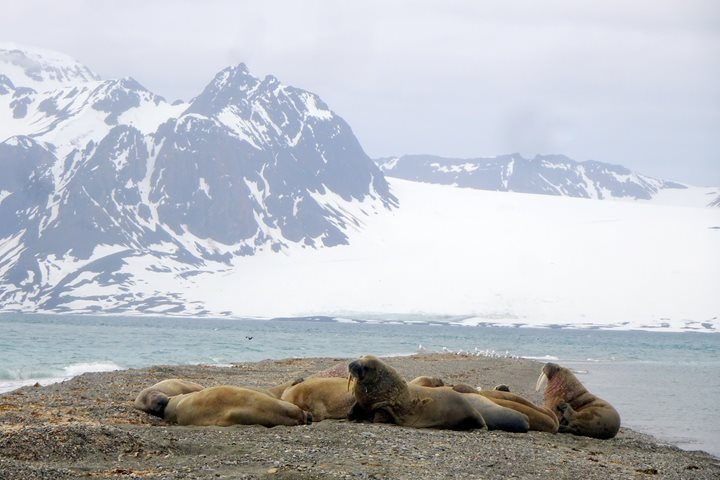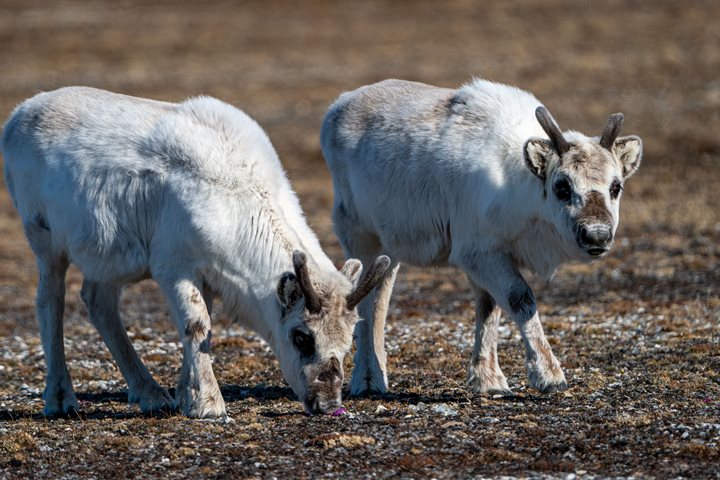Our stretch of extraordinary weather continues, and Svalbard offered an abundance of exploratory opportunities. Under bold sunshine and calm conditions, we meandered along the tidewater face of the Negribreen Glacier system during this morning’s one-way Zodiac cruise. With a terminal ice edge stretching nearly 20 km and comprised of four neighboring glaciers, this is among the largest glacier systems on Spitsbergen. Between 2016-2018, Negribreen surged with a temporary, dramatic increase in speed to over 25 meters per day. The resulting ice surface remains heavily crevassed, although the rate of advance has returned to normal (on the order of centimeters per day). Large icebergs litter the northern reaches of Storfjord, where they have calved from the glacier face and patiently wait to fragment further. We marveled at the deep, brilliant blue colors of polished ice, the bergs’ sculptural shapes, and the vast number of kittiwakes foraging along the tidewater edge. Svalbard glaciologist Andreas Alexander filled in the details of ice formation, movement, and health during a post-cruise presentation.
Polar bears are strongly tied to the sea and to sea ice; in this region, their numbers in the summer depend on the amount, condition, and accessibility of both ice and preferred food (seals). The ship’s bridge team, crew, and expedition staff have been keeping a vigilant watch for bears on shore or among the pack ice each day of the voyage, especially along the eastern coast of Spitsbergen. And this afternoon, their sharp eyesight and finely tuned knowledge of polar bear coloration and movement paid off! National Geographic photographer Camille Seaman’s talk was interrupted so we could gather on the bow to watch a solitary adult bear rest on the ice, stretch, smell the air and water for potential prey (and our presence), and walk from floe to floe. Binoculars and telephoto camera lenses were not needed – this bear was easily in view, and all enjoyed observing its behaviors and charismatic curiosity. As we sailed down the coast, naturalist Kerstin Langenberger shared her expertise on bear biology and population status, complemented by anecdotes from her experiences researching these incredible creatures.







